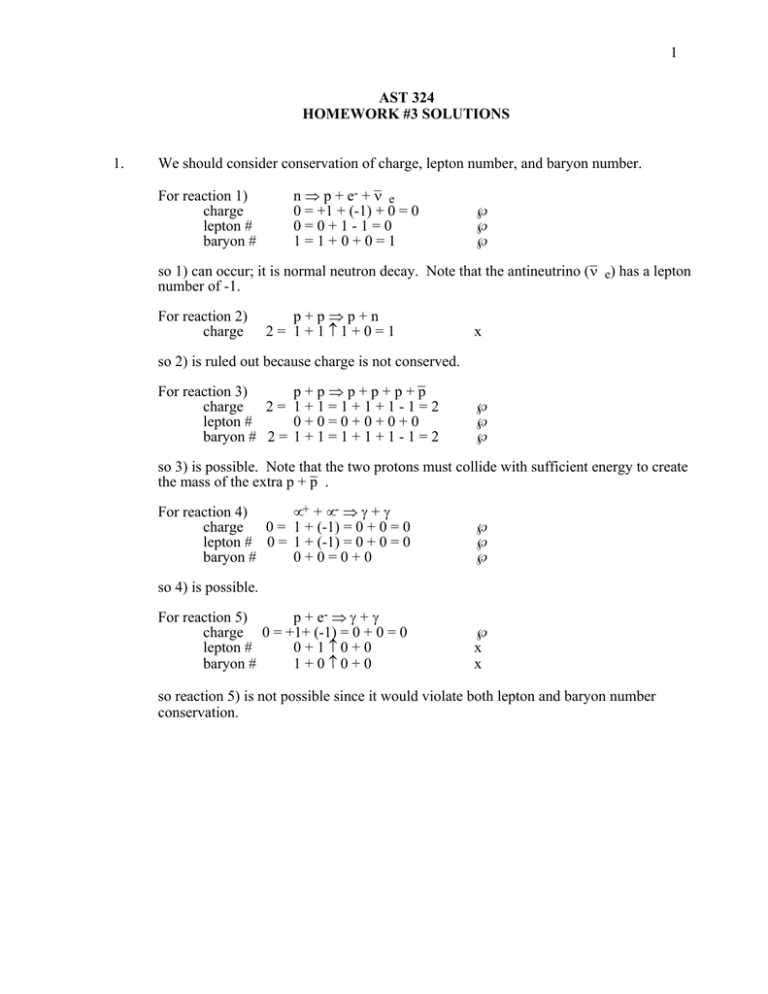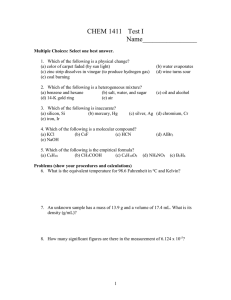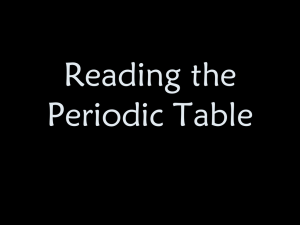Homework Set 3 Answers
advertisement

1 AST 324 HOMEWORK #3 SOLUTIONS 1. We should consider conservation of charge, lepton number, and baryon number. _ For reaction 1) n ⇒ p + e- + ν e charge 0 = +1 + (-1) + 0 = 0 √ lepton # 0=0+1-1=0 √ baryon # 1=1+0+0=1 √ _ so 1) can occur; it is normal neutron decay. Note that the antineutrino (ν e) has a lepton number of -1. For reaction 2) charge p+p⇒p+n 2= 1+1≠1+0=1 x so 2) is ruled out because charge is not conserved. _ For reaction 3) p+p⇒p+p+p+p charge 2= 1+1=1+1+1-1=2 √ lepton # 0+0=0+0+0+0 √ baryon # 2 = 1 + 1 = 1 + 1 + 1 - 1 = 2 √ so 3) is possible. Note that _ the two protons must collide with sufficient energy to create the mass of the extra p + p . For reaction 4) µ+ + µ- ⇒ γ + γ charge 0 = 1 + (-1) = 0 + 0 = 0 lepton # 0 = 1 + (-1) = 0 + 0 = 0 baryon # 0+0=0+0 √ √ √ so 4) is possible. For reaction 5) p + e- ⇒ γ + γ charge 0 = +1+ (-1) = 0 + 0 = 0 lepton # 0+1≠0+0 baryon # 1+0≠0+0 √ x x so reaction 5) is not possible since it would violate both lepton and baryon number conservation. 2 2. When the temperature of the Universe drops below T = 6 × 109 K, photons no longer have enough energy to produce electron-positron pairs. But electrons and positrons can still annihilate, so all the positrons annihilate, leaving the one in a billion (1/109) excess of electrons. The energy released slows the cooling of the Universe, but the neutrinos have decoupled so they are somewhat cooler than the other constituents from this time onward. For pair production we need energy E = kTth and photon energy is given by E = hν, so kTth c ch νth = h and λth = ν = kT . th th Using the handout on physical constants, λ th = 3 x 1010 cm s-1 6.6 x 10-27 gm cm2 s-1 1.43 gm cm2 s-2 = cm 6 x 109 1.38 x 10-16 ergs K-1 • 6 x 109 K gm cm2 s-2 = 2.4 × 10-10 cm. Since E is greater for higher ν or lower λ, any photons with wavelength less than λth can cause pair production. Comparison to the handout on the electromagnetic spectrum shows that these are gamma-rays (γ-rays). 3. If we need enough energy for muon pair production, and muons are 200 times more ∆Mc2 and ∆M is 200 times massive than electrons, Tth(µ) = Tth(e) × 200 since Tth = k larger for muons, so Tth(µ) = 200 × 6 × 109 K = 1.2 × 1012 K. The temperature of the Universe is inversely proportional to its size scale, and during 1 these early times the size is proportional to the square root of the time (t1/2). So T ∝ a 1 ∝ ∝ t-1/2. Alternatively, we could notice that in the early frames of the first three t minutes, each factor of 10 in time decreases the temperature by a factor of about 3, or 10 . Thus, t ∝ T-2, so the age of the Universe when T = 1.2 x 10-12 could be calculated from the time at the first frame, for example, when t = 0.01 sec and T = 1011 K. 1.2 x 1012-2 1 0.01 t -2 = -5 = = 12 so t = 11 144 144 = 7 × 10 s. 0.01 10 3 4. At early times, at ~ 0.01 sec, the temperature of the Universe is far above the threshold temperature for reactions that turn protons into neutrons, so there are roughly equal numbers of each. As time goes on, the temperature drops. When T = Tth _~ 1.5 × 1010 K, the ratio of neutrons to protons would be 1 1 n = e -T th / T = e-1 _~ 2.7 ~ 3 p so the Universe is about 75% protons and 24% neutrons (frame 3, t = 1 sec). If we used the same formula at 3 min, 46 sec, when T = 9 × 108, we would compute 10 8 n = e1.5 × -10 / 9 x10 = e -1.5/0.09 = e -16.7 p _ 5.9 × 10-8. ~ In fact, the ratio is not that low because the density has dropped to the point that collisions are not frequent enough to establish thermal equilibrium (some neutrons survive by avoiding collisions with e+ or ν). The neutrons still aren't safe because they will decay in about 15 mins. The net result is that about 13% of the baryons are neutrons at 3 min 46 sec when nucleosynthesis begins. Once the neutrons are in d or He, they don't decay.


